Table of content
Rock sugar soup, known as bing tang tang in Chinese cuisine, is a beloved dessert that transcends generations with its delicate sweetness and comforting warmth. This humble dish, often simmered to perfection with minimal ingredients, holds a special place in Asian culinary traditions. Whether enjoyed as a soothing remedy for a sore throat, a refreshing treat on a hot day, or a symbol of hospitality during gatherings, rock sugar soup embodies simplicity and elegance. In this comprehensive guide, we explore the history, ingredients, and meticulous steps required to create this iconic dessert, ensuring every spoonful delivers pure, unadulterated bliss.
A Brief History of Rock Sugar Soup
The origins of rock sugar soup can be traced back centuries to ancient China, where it was revered not just as a dessert but as a medicinal elixir. Rock sugar, or bing tang, is a type of unrefined cane sugar formed into large crystals, prized for its natural sweetness and perceived health benefits. Traditional Chinese medicine (TCM) often incorporates rock sugar into remedies, believing it to soothe coughs, moisten the lungs, and balance the body’s energy. Over time, this medicinal preparation evolved into a culinary staple, with families passing down recipes that blended practicality with nostalgia.
Today, rock sugar soup remains a fixture in households across Asia, adapting to regional preferences and seasonal ingredients. From the fragrant addition of chrysanthemum petals in Guangdong to the hearty inclusion of red beans in Taiwan, each variation tells a story of culture and creativity. Yet, at its core, the essence of rock sugar soup lies in its ability to transform simple elements into something profoundly satisfying.
Ingredients: The Foundation of Flavor
Crafting the perfect rock sugar soup begins with selecting the finest ingredients. While the recipe is forgiving, the quality of each component directly impacts the final result. Here’s a breakdown of the essentials:
-
Rock Sugar (Crystal Sugar):
The star of the dish, rock sugar is available in varying sizes and colors, from pale amber to golden yellow. Opt for larger crystals, as they dissolve slowly, imparting a subtle, layered sweetness without overpowering the soup. Avoid refined white sugar, as it lacks the depth and complexity of rock sugar.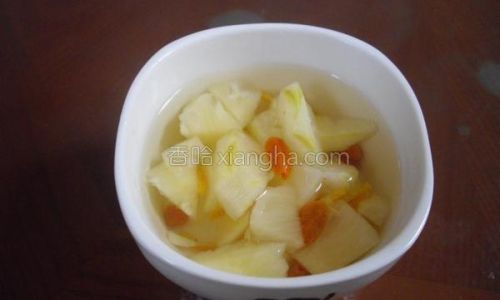
-
Water:
Use filtered or spring water to ensure clarity and purity. The ratio of water to sugar typically ranges from 4:1 to 5:1, depending on desired sweetness. -
Optional Enhancements:
- Dried Ingredients: Red dates (hong zao), goji berries (gou qi zi), lotus seeds (lian zi), and snow fungus (yin er) are popular additions, each contributing unique textures and health benefits.
- Fresh Fruits: Slices of pear, apple, or Asian pear add a refreshing twist, balancing the sweetness with a hint of tartness.
- Herbs: Dried chrysanthemum flowers or osmanthus petals infuse the soup with floral aromas.
Step-by-Step Guide to Perfect Rock Sugar Soup
Preparing the Ingredients
- Rinse Dried Goods: Gently wash red dates, goji berries, and lotus seeds under cool water to remove dust. Soak snow fungus in warm water for 20–30 minutes until softened, then trim any hard edges.
- Peel and Slice Fruits (if using): Core and slice pears or apples into thin wedges. Set aside.
Simmering the Base
- In a medium-sized pot, combine 8 cups of water and 1.5–2 cups of rock sugar. Bring to a gentle boil over medium heat, stirring occasionally to dissolve the sugar.
- Pro Tip: For a richer flavor, add a 2-inch piece of fresh ginger (peeled and lightly crushed) during boiling. Remove before serving if desired.
Adding Depth with Dried Ingredients
- Once the sugar dissolves, reduce the heat to low. Add 10–12 red dates, a handful of goji berries, and ¼ cup of lotus seeds. Simmer uncovered for 30–40 minutes, allowing the flavors to meld.
- Why Simmer Uncovered? This method reduces the liquid gradually, concentrating the sweetness and softening the ingredients to a tender perfection.
Incorporating Fresh Elements
- If using fruits, add them during the last 10–15 minutes of simmering to preserve their texture and aroma.
- For snow fungus, drain the soaked pieces and tear them into small clusters before adding to the pot.
Final Touches
- Taste the soup and adjust sweetness if needed. For a thicker consistency, simmer an additional 5–10 minutes.
- Remove from heat and let cool slightly. The soup can be enjoyed warm, at room temperature, or chilled.
Variations to Explore
One of the joys of rock sugar soup is its versatility. Here are three regional variations to inspire your culinary adventures:
-
Chrysanthemum Rock Sugar Soup:
Add 2 tablespoons of dried chrysanthemum flowers during the final 5 minutes of simmering. Serve chilled with a squeeze of lime for a floral, tangy twist. -
Sweet Osmanthus and Pear Soup:
Substitute half the water with fresh pear juice and sprinkle in 1 tablespoon of dried osmanthus petals. Garnish with mint leaves before serving.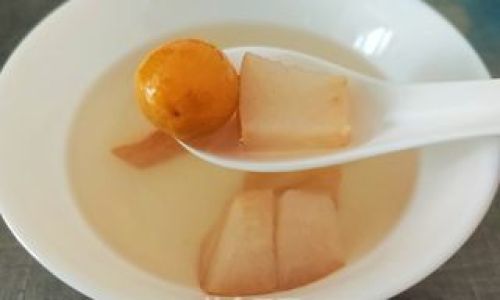
-
Red Bean and Coconut Soup:
Introduce ½ cup of pre-cooked red adzuki beans and ¼ cup of coconut milk during the last 10 minutes. This tropical adaptation offers a creamy, earthy richness.
Health Benefits: More Than Just Sweetness
Beyond its delightful taste, rock sugar soup boasts a range of health benefits, rooted in both TCM and modern nutrition:
- Hydration and Energy: The high water content and natural sugars provide instant hydration and a quick energy boost.
- Antioxidant Power: Ingredients like goji berries and red dates are rich in antioxidants, which combat inflammation and support immune function.
- Digestive Aid: Lotus seeds, a key ingredient in many variations, are believed to strengthen the spleen and alleviate digestive discomfort.
- Respiratory Support: Rock sugar’s moistening properties make it a go-to remedy for dry coughs and sore throats.
Serving Suggestions and Cultural Significance
Rock sugar soup is as much a cultural icon as it is a culinary delight. In China, it is often served during Lunar New Year celebrations, symbolizing sweetness and prosperity for the coming year. Families in Taiwan might enjoy it after mooncake feasts during Mid-Autumn Festival, while in Malaysia, it’s a staple at buka puasa (iftar) gatherings during Ramadan.
Beyond festivals, the soup is a gesture of care. A mother might simmer a pot for her child returning home from a long trip, or friends might share it as a palate cleanser after a spicy meal. Its unassuming nature mirrors the warmth of human connections—simple, nourishing, and enduring.
Troubleshooting Common Pitfalls
Even seasoned cooks encounter hiccups. Here’s how to avoid them:
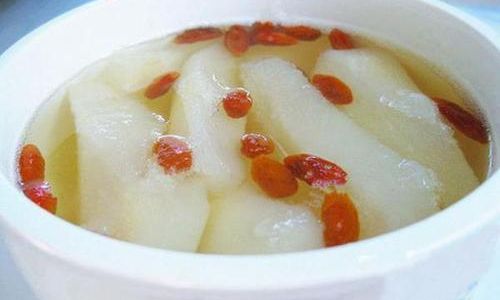
- Cloudy Broth: Use cold water initially and avoid stirring vigorously during boiling.
- Overly Sweet Soup: Balance with a splash of fresh lemon juice or a pinch of sea salt.
- Tough Lotus Seeds: Soak them overnight before cooking to ensure tenderness.
Storing and Reheating
Leftovers can be stored in an airtight container in the refrigerator for up to 3 days. Reheat gently on the stove, adding a splash of water if the soup thickens. For a refreshing twist, pour chilled soup into molds and freeze for homemade rock sugar popsicles.
Conclusion: The Legacy of a Simple Pleasure
In a world of elaborate desserts and fleeting trends, rock sugar soup remains a testament to the beauty of simplicity. Its creation is an act of mindfulness—a dance of fire, water, and time that rewards patience with pure, unadulterated joy. Whether you’re seeking comfort in a bowl or a bridge to cultural traditions, this timeless recipe invites you to slow down, savor the moment, and rediscover the magic in the mundane. So, gather your ingredients, light the stove, and let the sweet aroma of rock sugar soup fill your home with warmth and wonder. After all, some pleasures are best enjoyed slowly, one spoonful at a time.


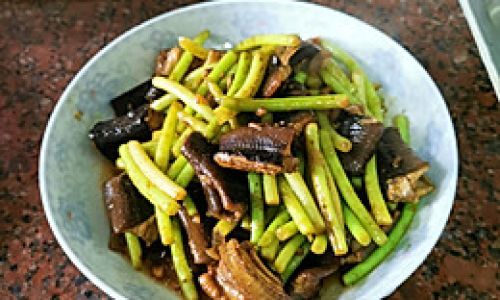
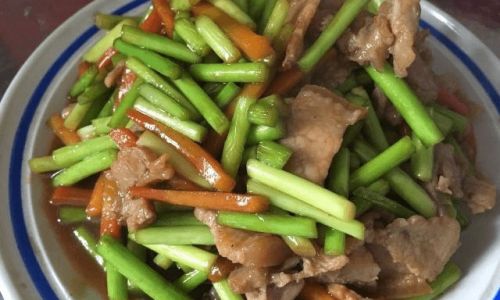
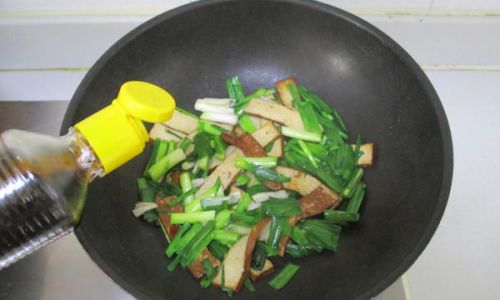
0 comments